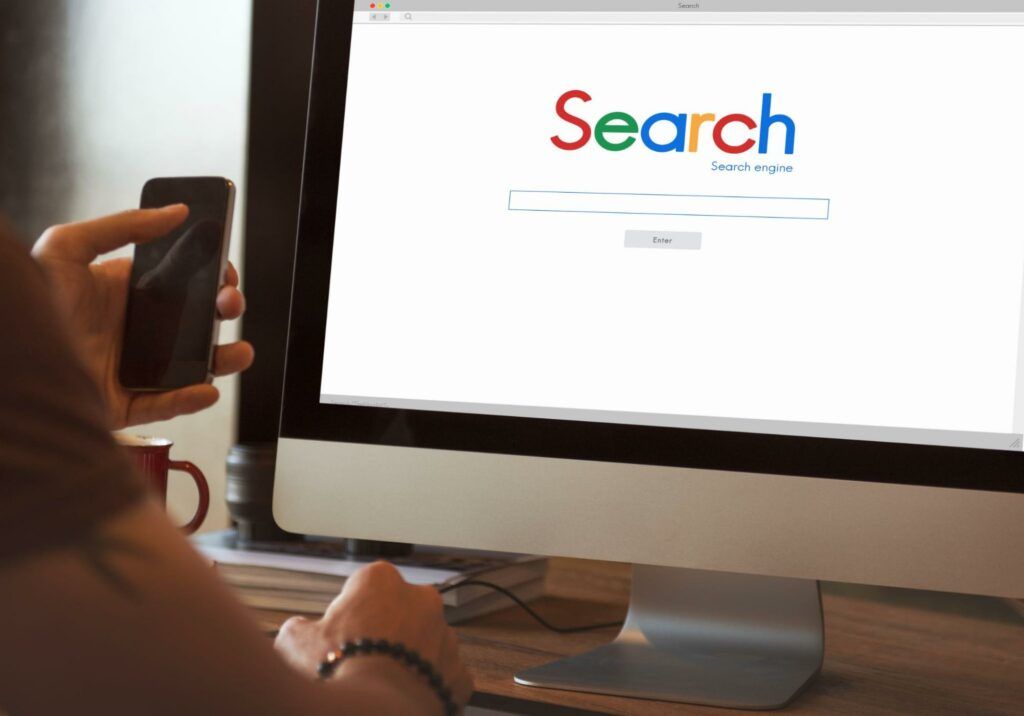Its been a long-standing debate amongst marketers regarding which type of traffic generation is the preferred eCommerce promotion strategy. Although both have a similar objective of increasing sales, organic and paid traffic tackle marketing from two very different approaches. The decision about which marketing strategy to employ isn’t obvious like choosing to get eCommerce insurance, which is why in this article, our goal is to help you understand your options a little bit better. Throughout this article, we will discuss the difference between organic vs. paid traffic methods, their benefits, and how Amazon’s pay-per-click solution can help your Amazon store get the attention it deserves.
What is the difference between organic vs. paid traffic?
Organic traffic is any traffic that arrives at your site or eCommerce store from a search engine and has not been paid for, including blog posts, email newsletters, unpaid social media posts, and basically any content that hasn’t cost money to post. An organic marketing strategy’s success relies on the efforts of a brand’s inbound marketing and SEO efforts and its ability to bring visitors to its site and hopefully convert them into paid customers.
Paid traffic, on the other hand, is any traffic that arrives at your site through a paid link, click, or ad and includes methods such as campaigns, Google Ads, banners, social media ads, affiliate marketing, influencer marketing, and the list of options goes on. While organic marketing aims to drive traffic to your site over time and increase awareness, paid traffic aims to attract, engage and convert leads into customers through a specific campaign instantly. The right option, or a combination of them both, will depend on your budget, timeline, marketing goals, and platform.
The benefits of organic traffic
“Most businesses earn $8 for every $1 they spend on Google Ad campaigns”
According to Google ![]()
Where to begin? Based on a BrightEdge study, over 53% of trackable website traffic comes from organic search, while only 27% comes from paid traffic. The benefits are endless and can provide a huge boost in the right direction for your eCommerce store and business, and here’s why.
- It’s free – Lest we say more? This is a big benefit for small or new eCommerce businesses whose marketing budget is minimal and where the only thing you need to invest is time. Just like most things that demand hard work, it produces impressive results when done right.
- Increases ROI – ROI is the return on investment in your business. SEO strategies are well known for successfully boosting traffic via search engines to websites, resulting in an increased ROI.
For example, if you are paying a content writer for five blog posts at the cost of 1000 dollars, and as a result of these posts, search engines boost your website, and you make two sales of 1000 dollars each. $2000 for earnings – $1000 for content writing = $1000 profit. Your ROI is ($1000/$1000)*100 = 100%.
- Snowball benefits – Once you start sharing great content, your website is ranked higher on search engines. Better rankings result in higher exposure, which means you will get noticed much more. Once your store has been noticed, this results in an additional boost. You will receive more leads and better traffic and see this convert into higher revenue.
- Gives you a good name – Boosting your eCommerce store through organic traffic improves your brand’s credibility. A store that appears at the top of the results on a search engine signals to users that they are legit, trustworthy, and ranked higher for a reason. Unfortunately, paid traffic does not build the same trust, as people will be likelier to click on a natural search result than a paid advertisement.
- Better quality leads – An organic promotion strategy brings visitors to your store who will likely turn into paying customers. Organic traffic has better lead conversion because visitors actively looking for your product or something similar.

The benefits of paid traffic
Although organic traffic may seem convincing as the ultimate marketing method paid marketing strategies also have their benefits. Paid traffic is a broad term and involves basically any form of traffic paid to attain it. Whether it’s a website banner, pay-per-click ad, or youtube ad, money is in exchange for traffic. Here are the benefits of paid traffic:
- It’s instantaneous – You could say this is the ultimate bonus. The results from paid traffic are much faster than any other form of traffic generation. SEO marketing can take some time to take effect, while paid ads offer quick turnarounds and results. This can be a significant advantage to new eCommerce stores that need a boost in their early days.
- Helpful data – Through paid campaigns, you can access some useful and relevant data, such as relevant keywords, user locations, demographics, and much more. This data can be applied to your organic traffic efforts with SEO.
- Targeting – With paid traffic, you can target users you would otherwise never reach. By putting your ads on 3rd party websites, your ad can reach millions of users, increasing your exposure drastically.
- A great ROI – Although paid traffic costs more than organic traffic, the investment may be minor compared to your revenue. In a report released by Google, most businesses earn $8 for every $1 they spend on Google Ad campaigns.
- There is a solution for any budget – The options for paid traffic are endless and available for any kind of budget. With paid traffic, you can adjust your spending as you go. For example, in months when you have more expenses and less revenue, you can cut back on your paid traffic and focus on your financial demands, and visa versa.
What is Amazon Pay-per-Click, and how does it benefit me?
Most eCommerce stores selling on Amazon have heard of the term; if not, then it’s about time! Amazon Pay-per-Click (PPC) refers to a type of paid traffic internal to Amazon’s platform used by three out of four Amazon sellers. With the PPC model, an Amazon store owner only pays Amazon once a user clicks on the ad (unlike Pay-per-Impression, where the user has to pay per time the ad is viewed). Amazon PPC can target a specific audience through keywords, landing on the search results page of users who are ready to purchase. When a PPC is done well, it can significantly impact the stores’ visibility, ranking, revenue, and overall success. Although it is not mandatory, like Amazon liability insurance, it is highly recommended that Amazon store owners consider this investment in their marketing strategy.

While paid and organic search methods work well separately, they work best when together. Considering that organic marketing strategies can take 3-6 months to show results, If you are a new business looking for a quick boost, starting with paid traffic and switching over later on might be the best option for you. Another alternative is to use both simultaneously since both organic and paid marketing strategies often complement each other. Not sure where to start? Take a look at your marketing budget, create goals, and set a timeline. It might require a bit of touch and go, risk-taking, and guessing games, but at the end of the day and with a bit of patience, you’ll find the method or the mix of both that will suit your business best.
While the choice of an eCommerce promotion strategy may vary from retailer to retailer, the decision of eCommerce insurance and its benefits is relevant for all. Get in touch with Spott’s expert insurance consultants today to learn more about getting your store insured and staying safe from irreversible and unpredictable risks to your store.





